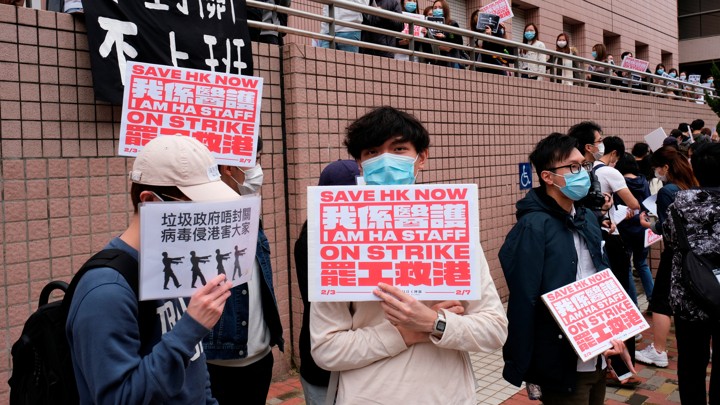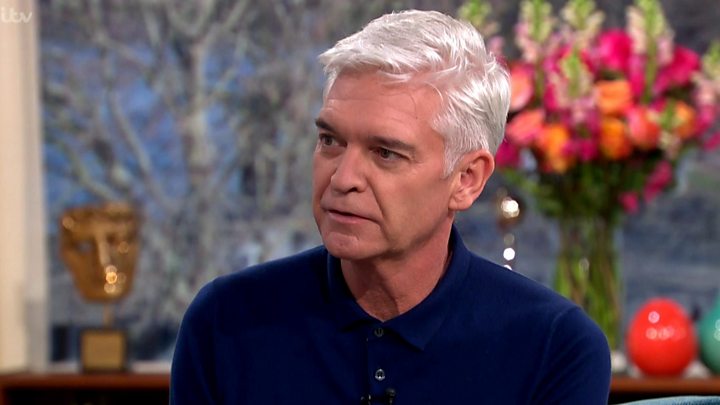Elana Lyn GrossContributor ForbesWomen
I cover leadership news with a focus on women

Ed Razek, the former CMO of L Brands Inc., center, hugs Kelly Gale, left, and Jasmine Tookes, right, ... [+ © 2014 BLOOMBERG FINANCE LP.
Victoria’s Secret has long been criticized for a lack of diversity and objectification of women in its advertisements and on the runway of its now-canceled annual fashion show. A new report found that the work environment, from the top down, was misogynistic and rife with sexual harassment and bullying.
The New York Times interviewed more than 30 current and former executives, employees, contractors and models and reviewed court filings and other documents. Their reporting found that Ed Razek, the former CMO of L Brands, the parent company of Victoria’s Secret, was the subject of multiple complaints of inappropriate conduct. He reportedly tried to kiss models, asked them to sit on his lap and touched one woman’s crotch before the 2018 Victoria’s Secret fashion show. (Razek said the allegations against him were “categorically untrue, misconstrued or taken out of context.”) Executives said that they told Leslie Wexner, the billionaire founder and CEO of L Brands, about Razek’s behavior but that their messages seemed to be disregarded.
“What was most alarming to me, as someone who was always raised as an independent woman, was just how ingrained this behavior was,” Casey Crowe Taylor, a former public relations employee at Victoria’s Secret told the New York Times. “This abuse was just laughed off and accepted as normal. It was almost like brainwashing. And anyone who tried to do anything about it wasn’t just ignored. They were punished.”
Today In: Leadership
In the U.S., Title VII of the Civil Rights Act prohibits employers from discriminating on the basis of sex, race, color, national origin and religion. The law defines harassment as illegal when, “enduring the offensive conduct becomes a condition of continued employment,” or “the conduct is severe or pervasive enough to create a work environment that a reasonable person would consider intimidating, hostile, or abusive.” The Equal Employment Opportunity Commission (EEOC) investigates workplace harassment in the U.S. People have a right to report harassment, participate in a harassment investigation or lawsuit, or oppose harassment, without fear of retaliation.
When someone files a complaint with human resources or a manager, employers are legally obligated to stop the conflict, protect the employee who reported and launch an investigation which usually includes interviews and collecting evidence. At the end of the investigation, the employer should determine if disciplinary action should be taken such as firing the individual who was found to be creating a hostile or unsafe work environment.
However, one of the difficulties is that the investigation process is not always followed. Even though retaliation for reporting is illegal, it is the most common discrimination charge filed with the EEOC. Richard B. Cohen, an employment discrimination lawyer at the law firm FisherBroyles, explains that retaliation is any adverse action — such as being demoted, fired or sidelined — that happens after someone reports discrimination. “It's much easier to prove than the underlying discrimination,” says Cohen. “All you have to show is that you, in fact, made a claim or filed a complaint, that you suffered some adverse action at work and that there was some nexus between the two.” Although he says that there is no way for an employee to prevent retaliation, he recommends taking detailed notes about what happened and keeping any evidence like emails or text messages.
When reports of harassment are neglected, toxic behavior persists. Having harassment policies in place is meaningless if they are not enforced. “Rules are great, but if you don't have the skills to follow the rules, then the rules fall apart,” says Sarah Beaulieu the author of "Breaking the Silence Habit: A Practical Guide to Uncomfortable Conversations in the #MeToo Workplace." “If you announce rules and then everybody walks out of the announcement back to a culture of silence, then really what that's doing is it's empowering people who are perpetrating sexual harassment and leading them to believe accurately that they'll continue to get away with their behavior.”
What happens when misogynistic behavior and harassment is pervasive and starts at the top? “It's very hard as a company to do anything but clean house,” says Cohen. That may be in motion at Victoria’s Secret. Wexner is reportedly considering stepping down after 57 years as chief executive officer of L Brands and exploring strategic options for Victoria’s Secret including a possible sale. In the meantime, L Brands seems to be distancing itself from the lingerie company: this week the main photo on the investor relations website was changed from scantily clad Victoria’s Secret models to a picture of scented soap.
Follow me on Twitter or LinkedIn. Check out my website or some of my other work here.
Elana Lyn Gros
I cover leadership news with a focus on women. My book, "What Next?: Your Five-Year Plan for Life after College" will be published by Adams Media, an imprint of Simo...


































 GETTY IMAGES
GETTY IMAGES